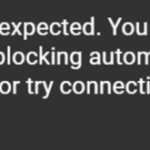.single .post-author, .post-date {
text-transform: none;
}
,
Last updated: February 20th, 2024
If you cannot connect to Chrome Remote Desktop, then in this guide you’ll find step by step instructions to fix the problem.
Chrome Remote Desktop is a free tool provided by Google that allows users to access and control a computer remotely from another device securely.
However, some users are unable to connect to their devices using the Chrome remote desktop app with error message “Hmmm… This is taking longer than expected. You may have a browser extension installed that is blocking automatic plying of videos. Try disabling all extensions or try connecting in incognito/private browser mode“.


- Related article: FIX: Mac OS Remote Desktop Connection Cannot Verify The Identity Of The Computer…
How to FIX: Chrome Remote Desktop Not Working.
Step 1. Check Internet Connection.
Make sure that both the computer you are trying to connect from and the target computer have a stable and active internet connection. If either computer is experiencing network problems, the Chrome Remote Desktop connection may fail.
Step 2. Sign-in with the Same Google Account.
Make sure you’re signed in with the same Google account on both computers. Chrome Remote Desktop relies on Google accounts for authentication.
Step 3. Remove VPN Extensions from Chrome.
If you have installed a VPN Plugin/Extension in Google Chrome, then proceed to remove it on both PC’s. (The Remote and the Client). Also, remove any other extensions that may affect your Internet connection.
To remove Chrome Extensions:
1. From the tree dots menu in the top right corner of your browser, go to Extensions > Manage Extensions
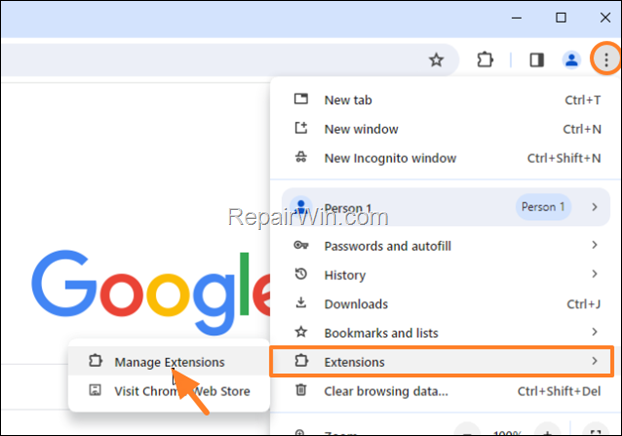

2. Find the extension that you want to remove from Chrome and click the Remove button.
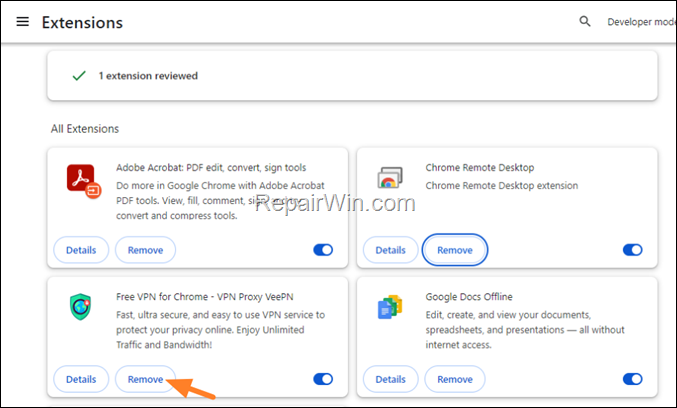

Step 4. Disable IPv6 Internet Protocol.
On the Remote computer (on the computer you’re trying to connect to), do the following:
1. Press Windows ![]()
![]() + R keys to open the run command box.
+ R keys to open the run command box.
2. Type ncpa.cpl and press Enter to open Network Connections.
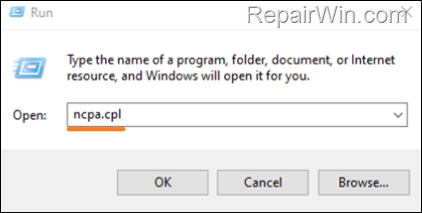

3. Double click at your active Network Adapter.
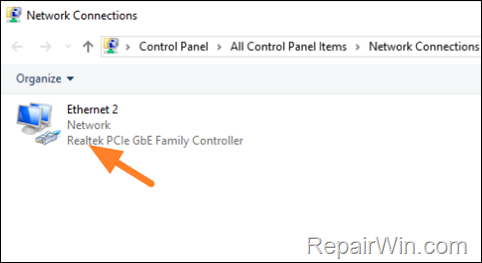

4. Click Properties.
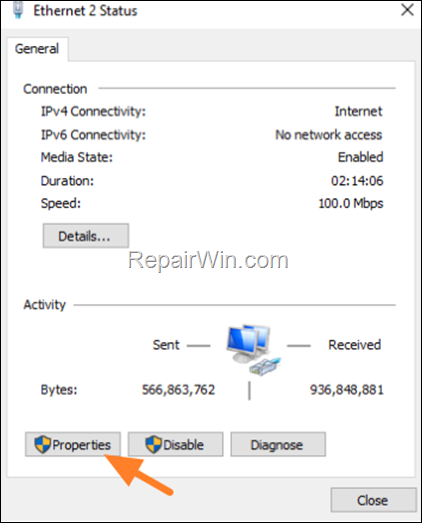

5. Uncheck the Internet Protocol Version 6 (TCPIP/IPv6) checkbox and click OK.
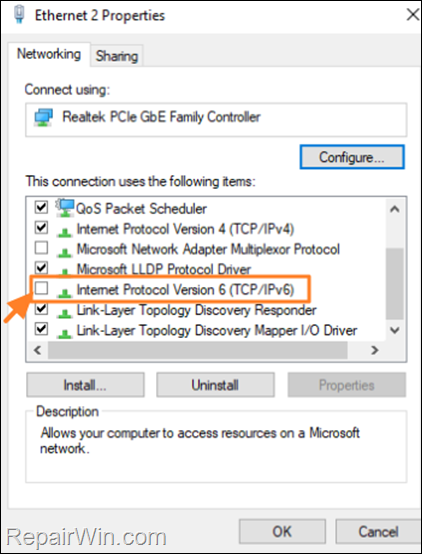

6. Try to connect with Chrome Remote Desktop on the remote computer.
Step 5. Allow Chrome Remote Desktop Traffic in Firewall
If you’re using a third-party antivirus or firewall program, temporarily disable it and then check if you can connect to Chrome remote desktop.
If yes, then proceed and allow the outbound traffic on following ports in your AV/Firewall program:
- 5222 TCP
- 5223 TCP
- 5269 TCP
- 5280 TCP
- 5281 TCP
- 5298 TCP/UDP
- 3478 TCP/UDP
Step 6. Uninstall and Re-Install Chrome Remote Desktop.
If you tried the above steps and the problem persists, then remove and reinstall Chrome Remote Desktop in both PC’s to see if that fixes the problem.
1. Type “control panel” in the Search and then open the Control Panel app.


2. Then click Uninstall a program.
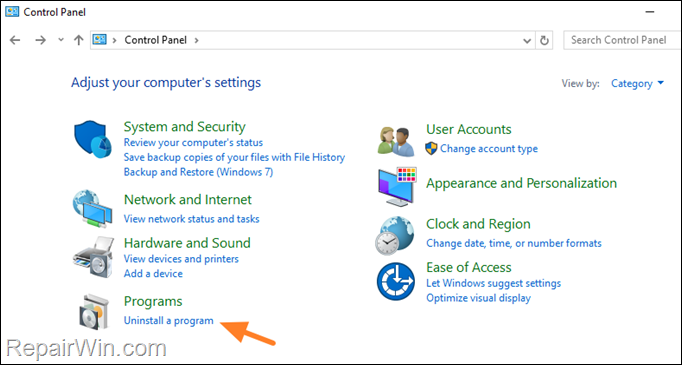

3. Select the Chrome Remote Desktop Host and click Uninstall.
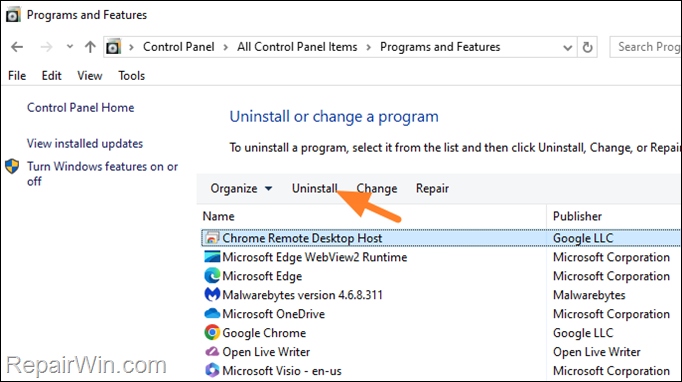

4. When the uninstallation is complete, open Chrome, navigate to Extensions and click the Remove button on Chrome Remote Desktop extension.
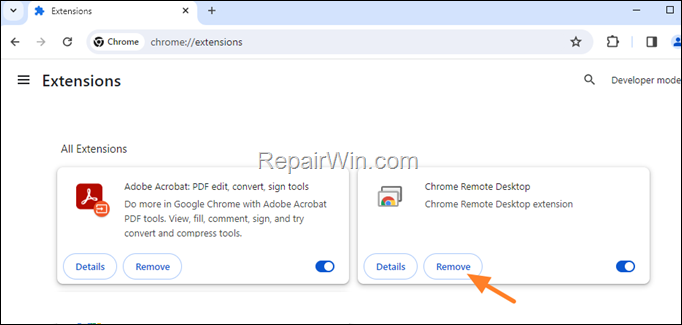

5. After performing the above steps, go to https://remotedesktop.google.com/access to download and install the Chrome Remote Desktop Host on the computer that you want to remotely access, and from the client computer go to https://remotedesktop.google.com/support to download and install the Chrome Remote Desktop extension in your Chrome browser.
That’s all folks! Did it work for you?
Please leave a comment in the comment section below or even better: like and share this blog post in the social networks to help spread the word about this solution.

- Author
- Recent Posts
- FIX: Chrome Remote Desktop unable to Connect to host. – February 20, 2024
- FIX: Running scripts is disabled on this system on Windows 10/11 – February 15, 2024
- FIX: Device is Missing Important Security and Quality Fixes in Windows 11/10. – February 13, 2024

